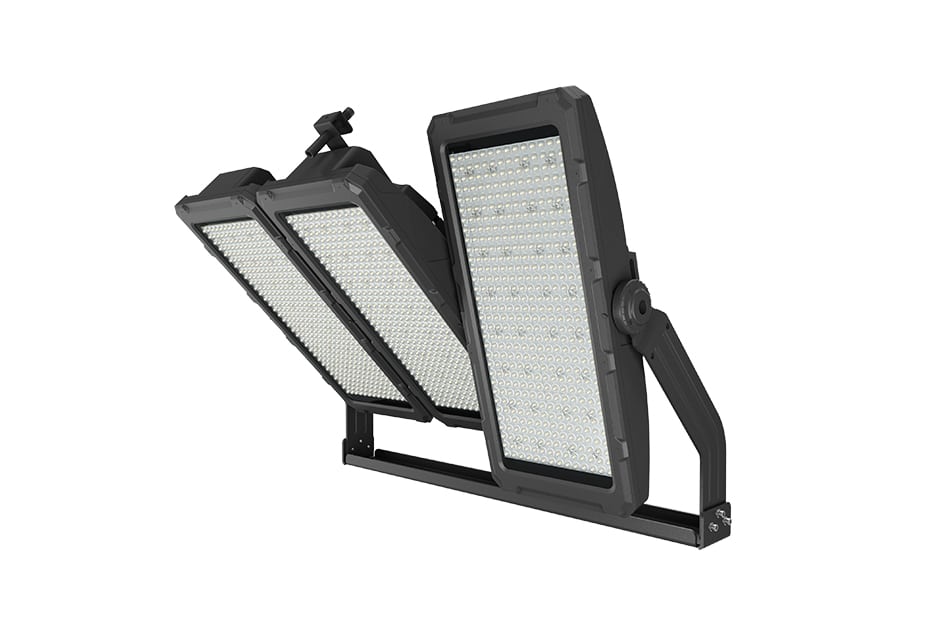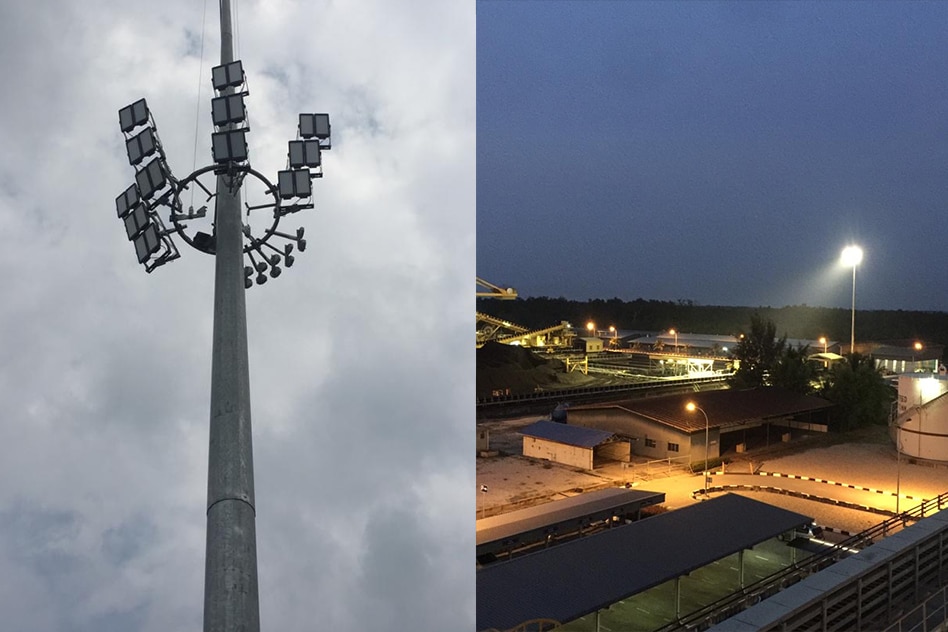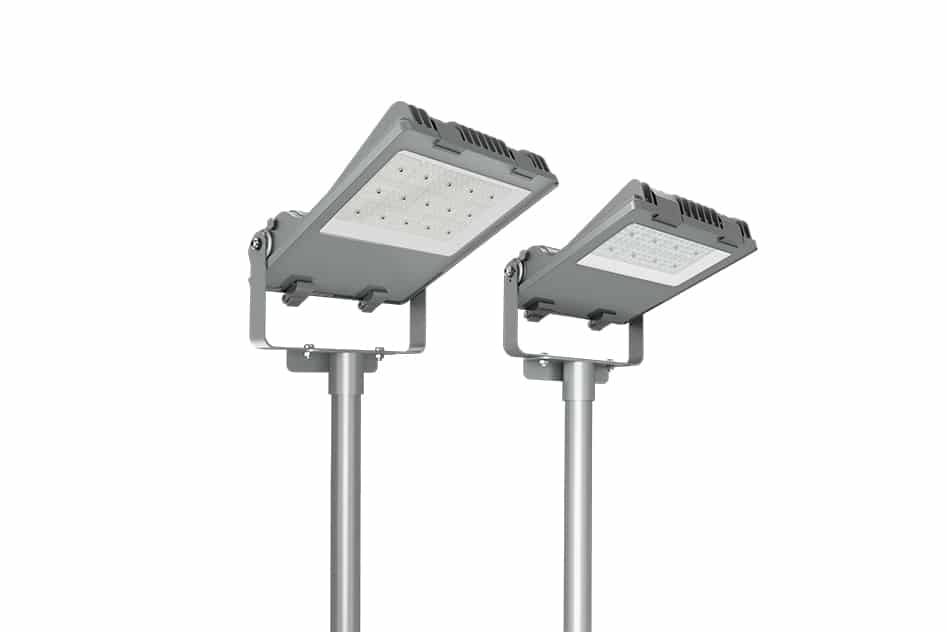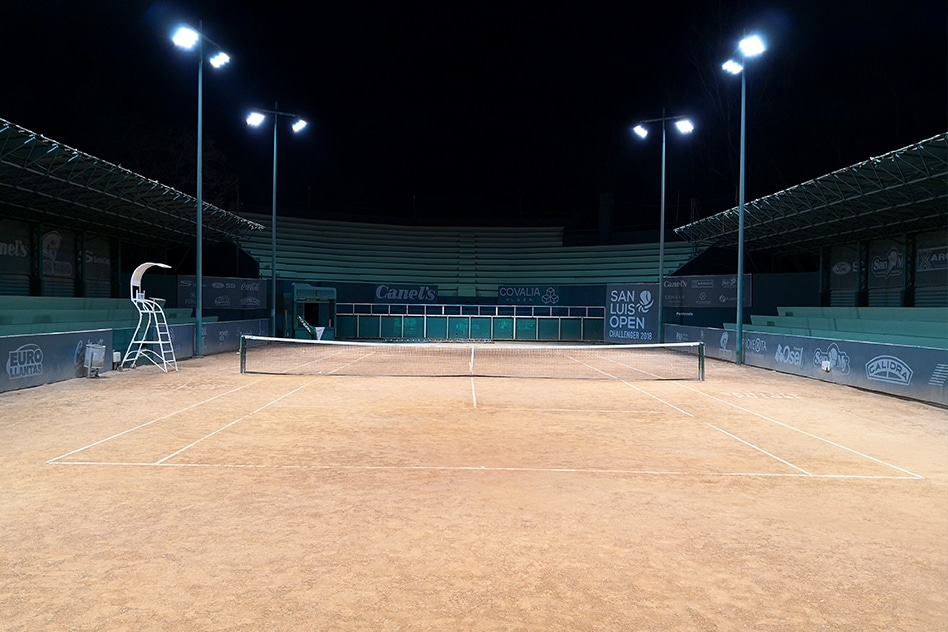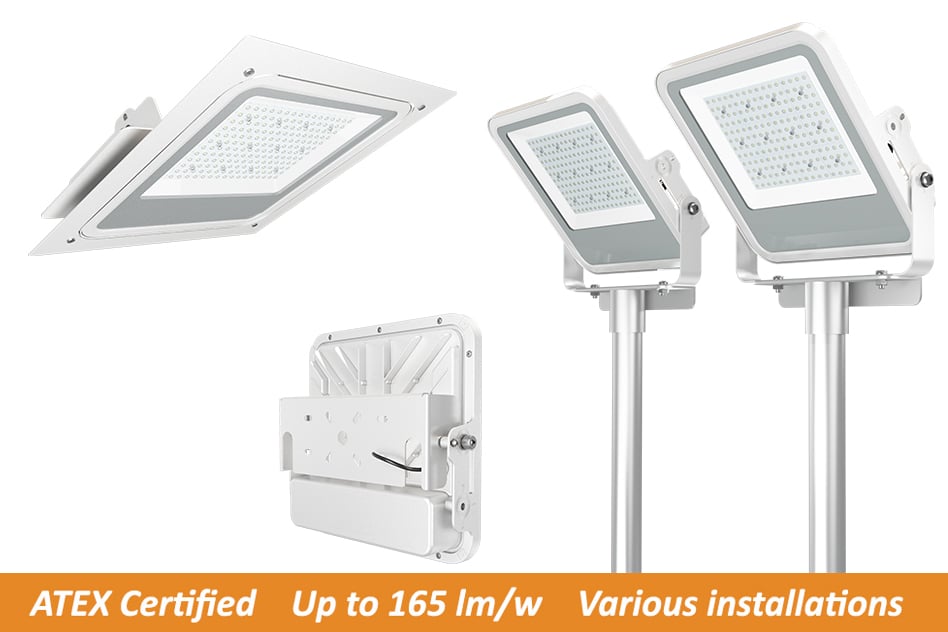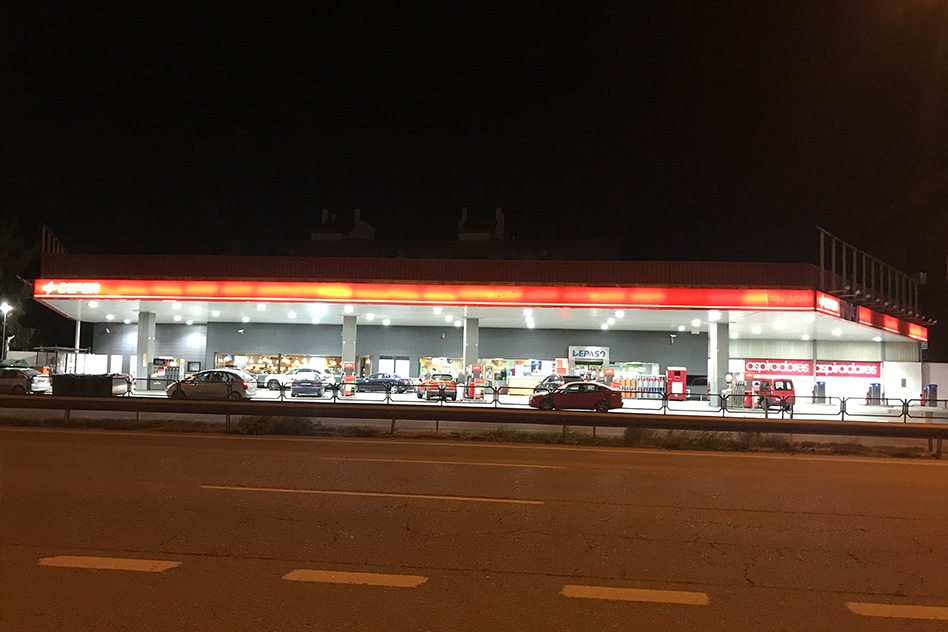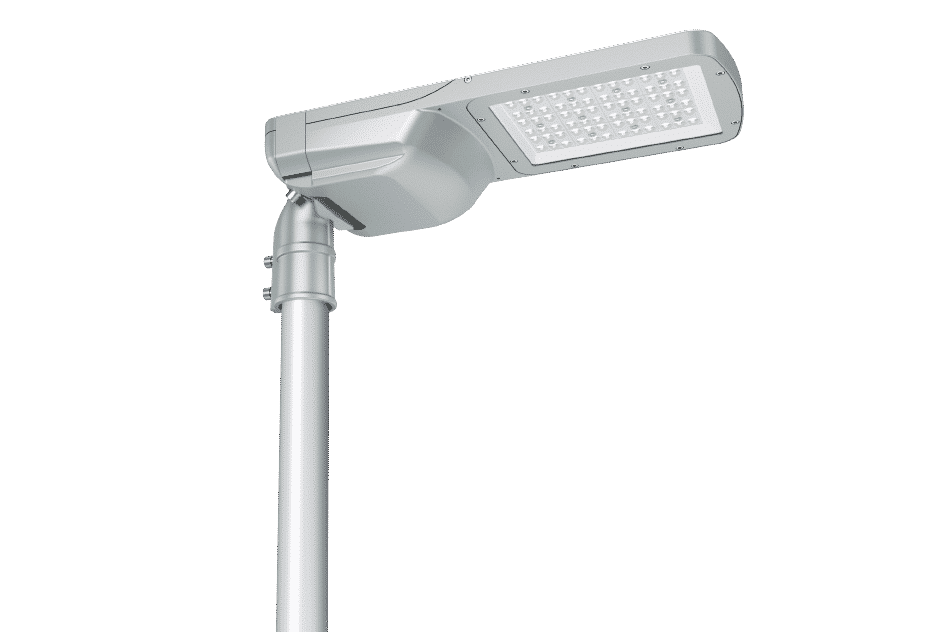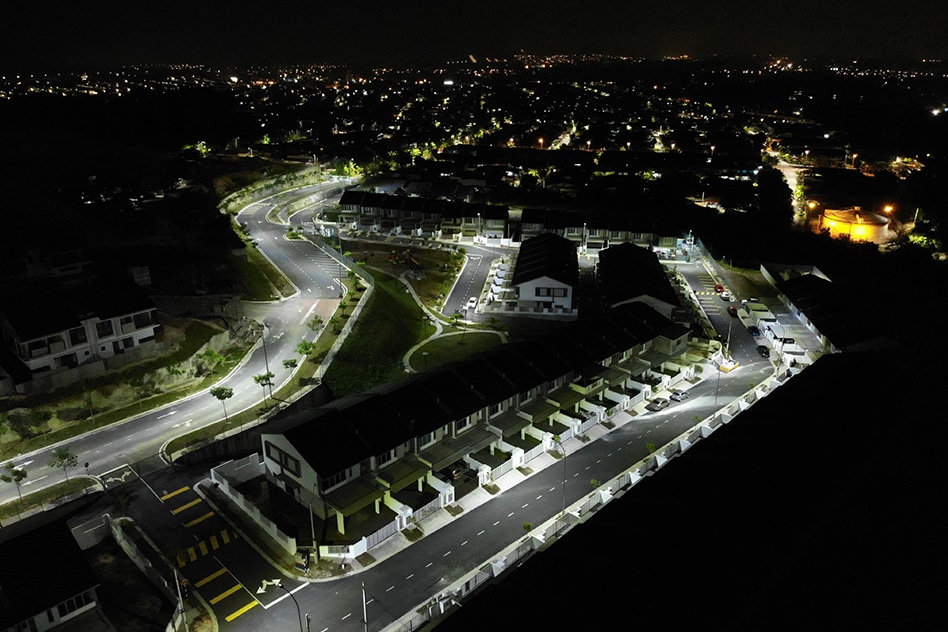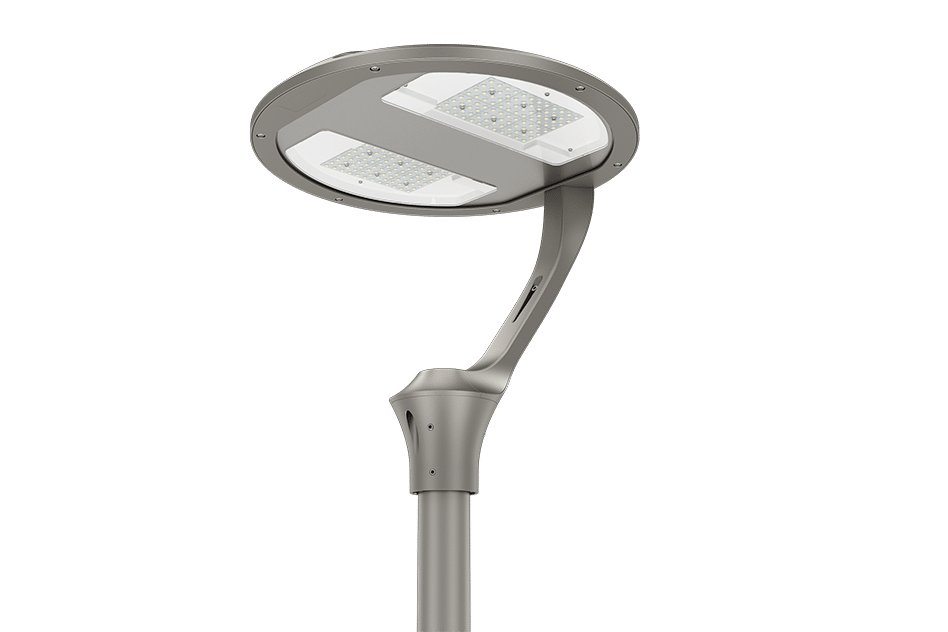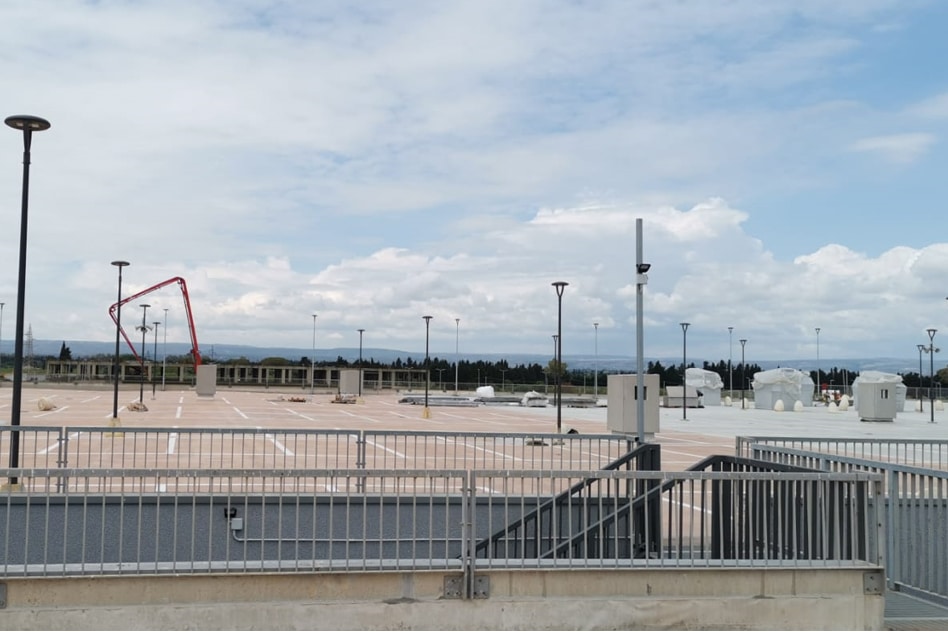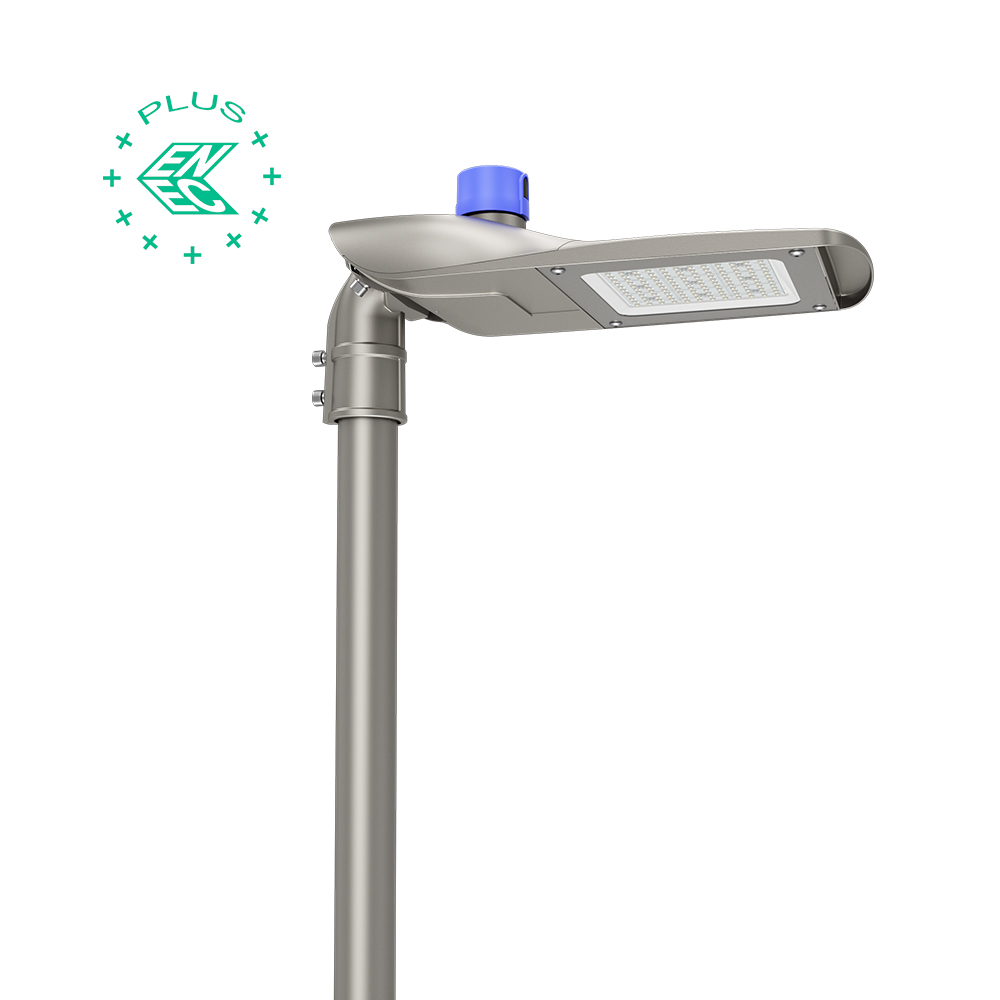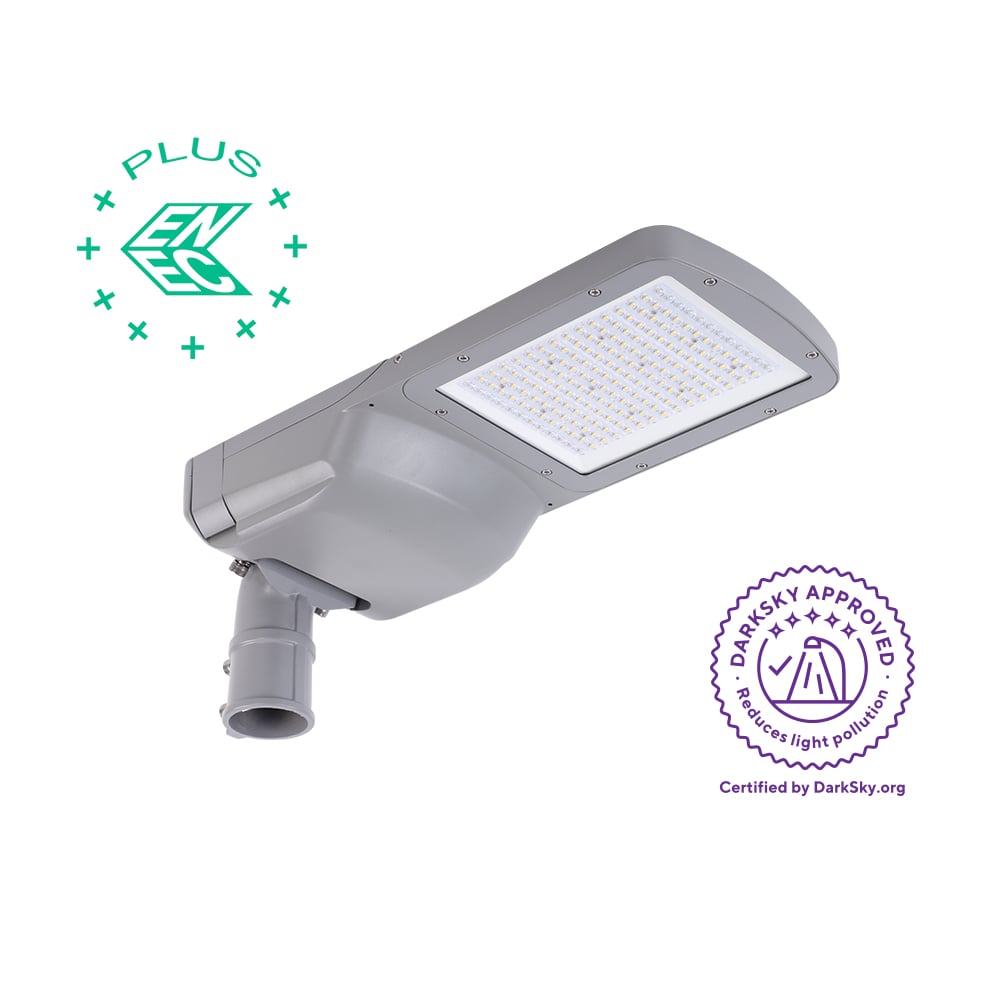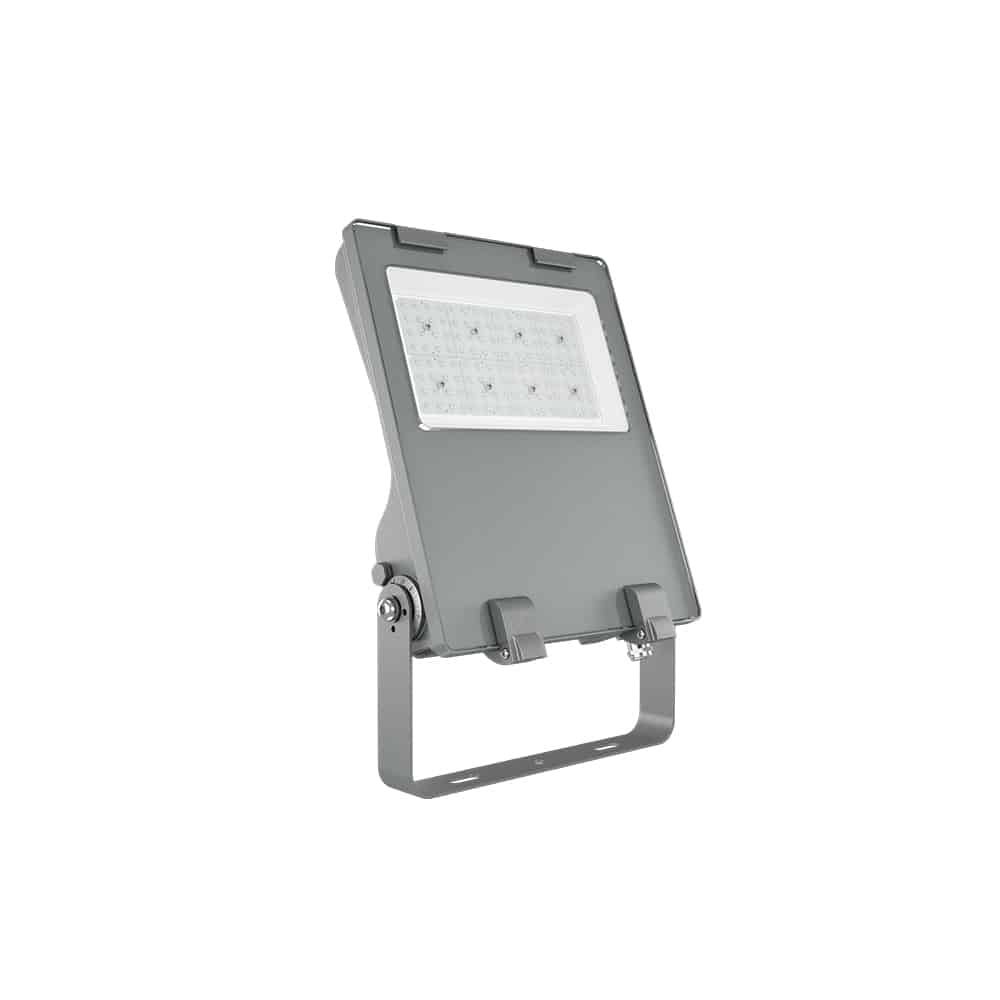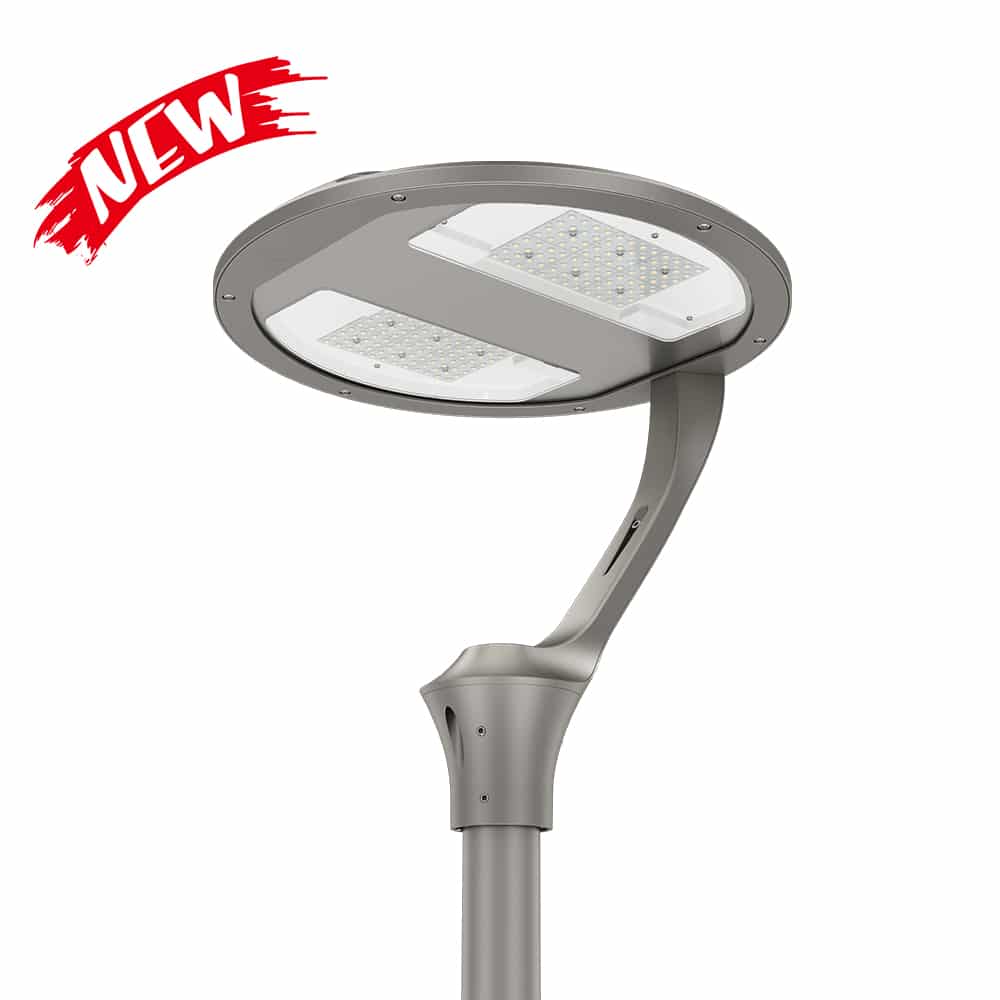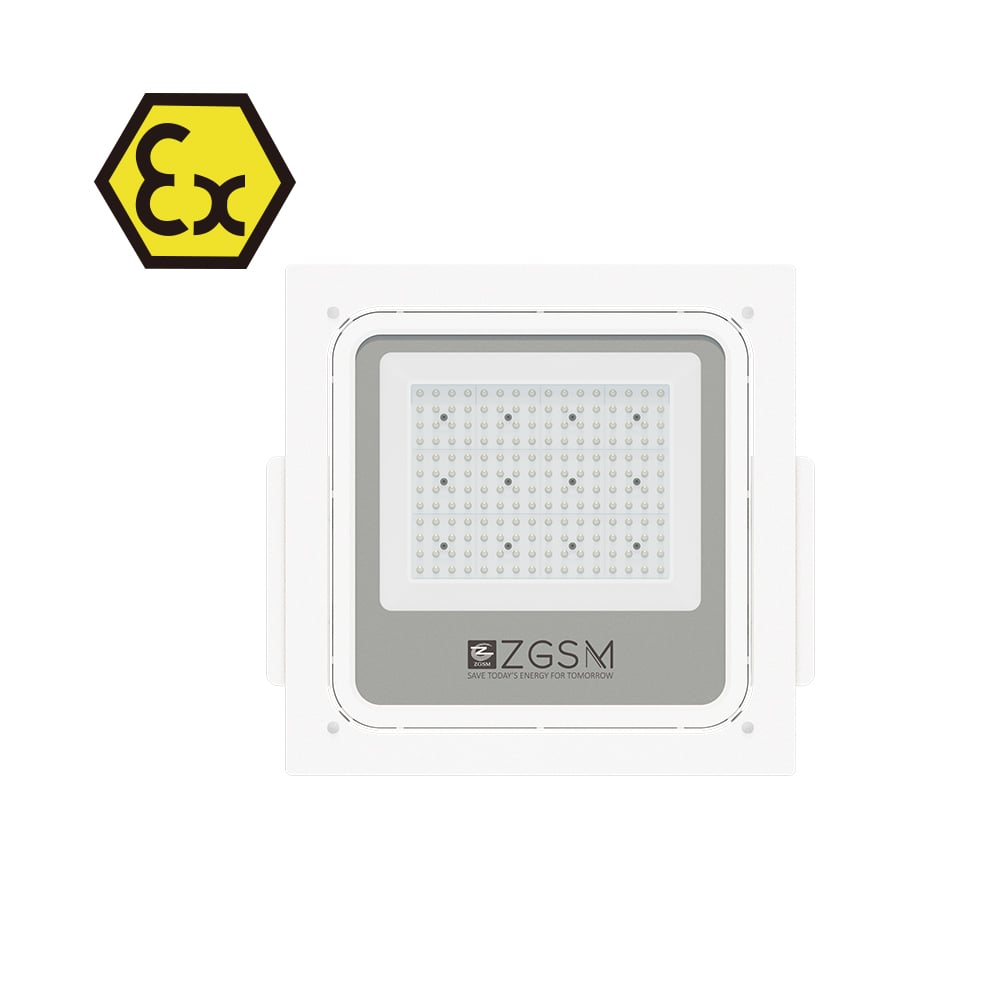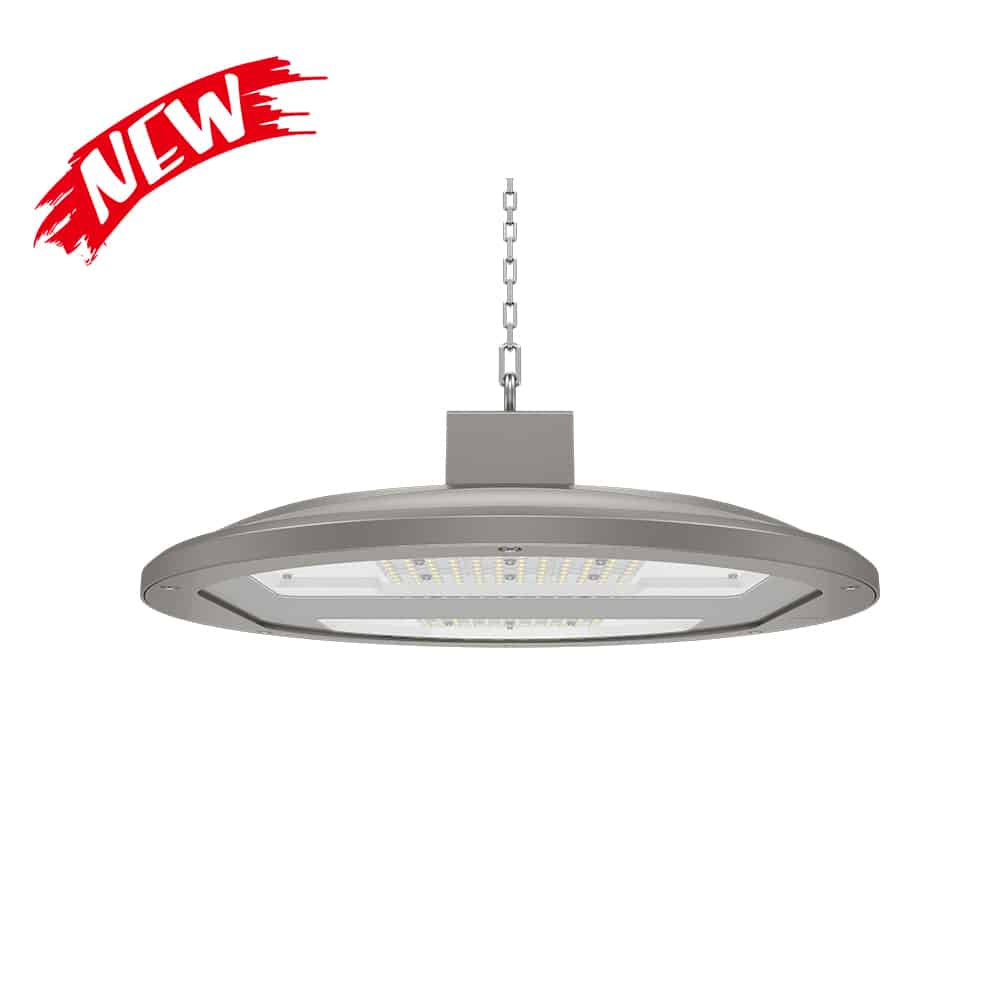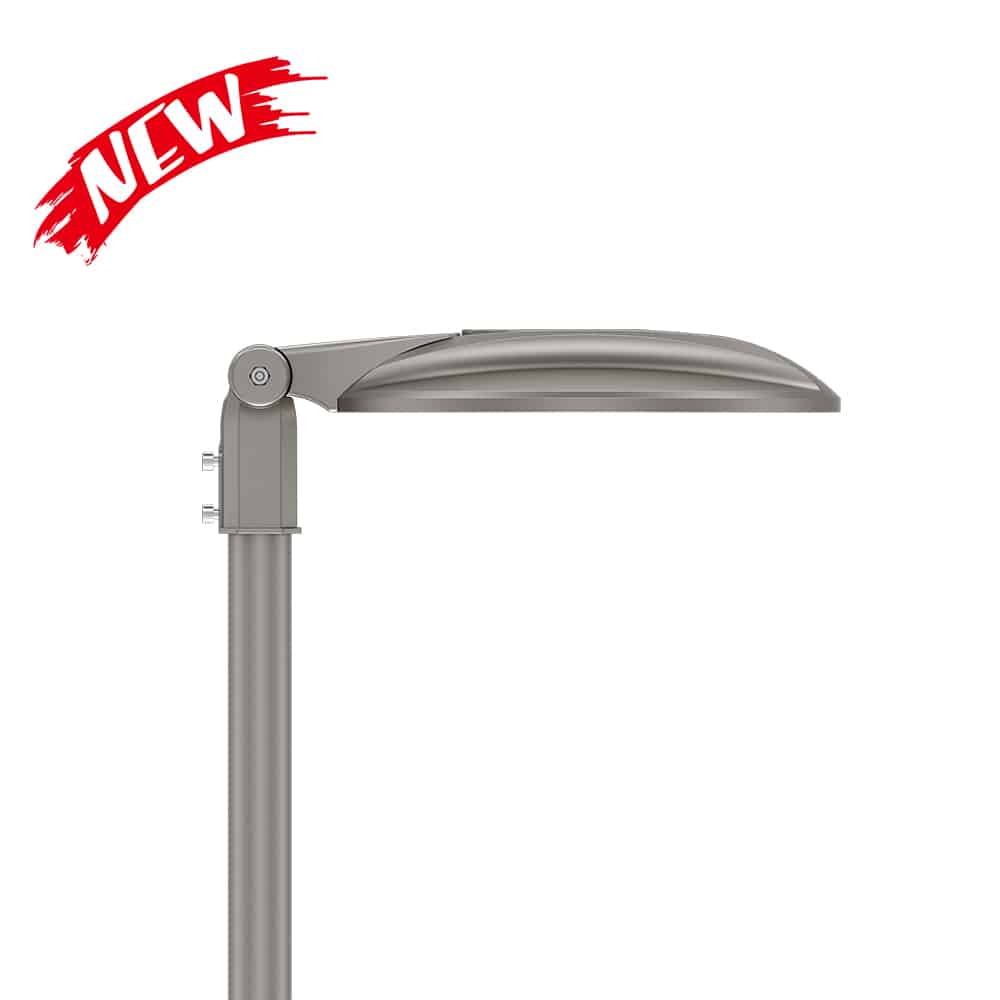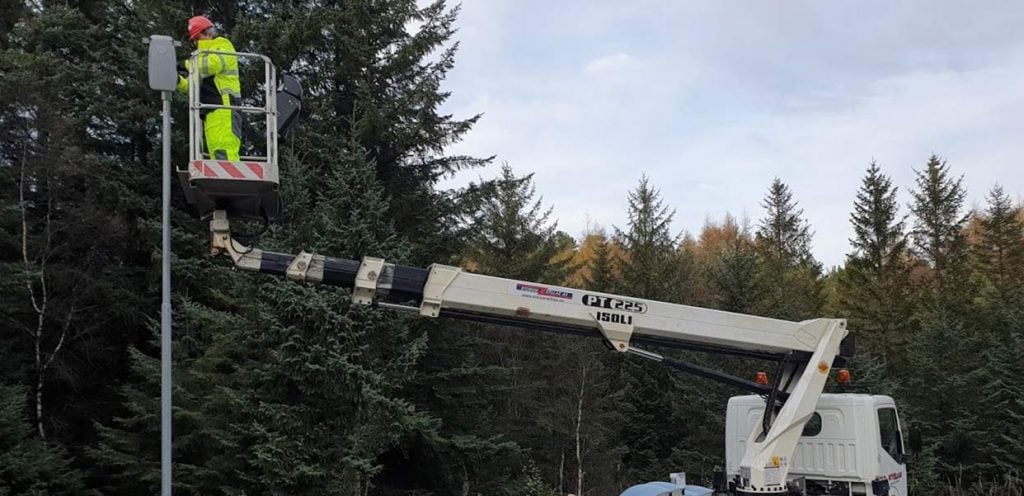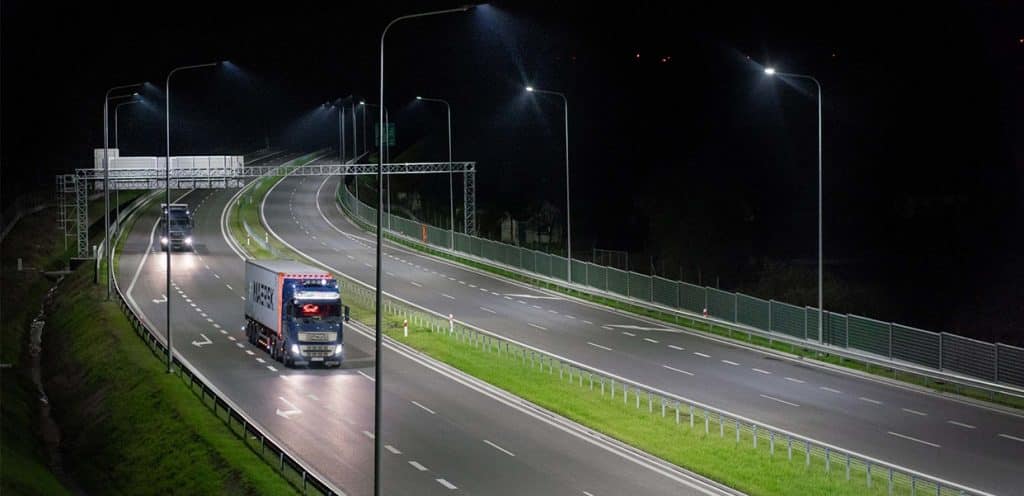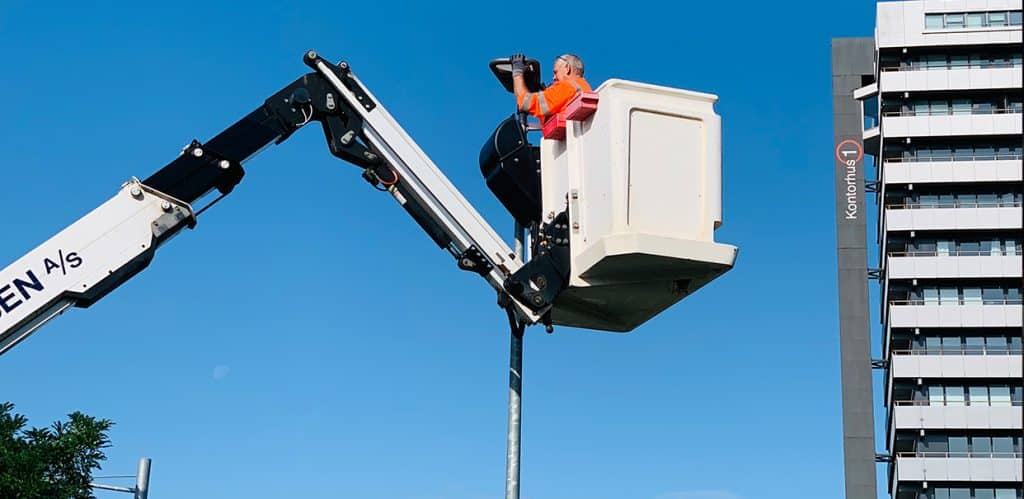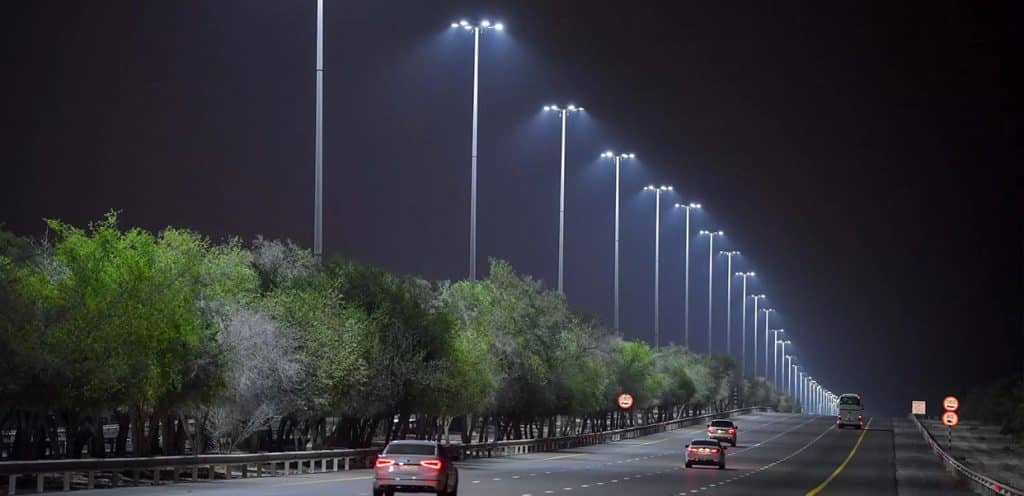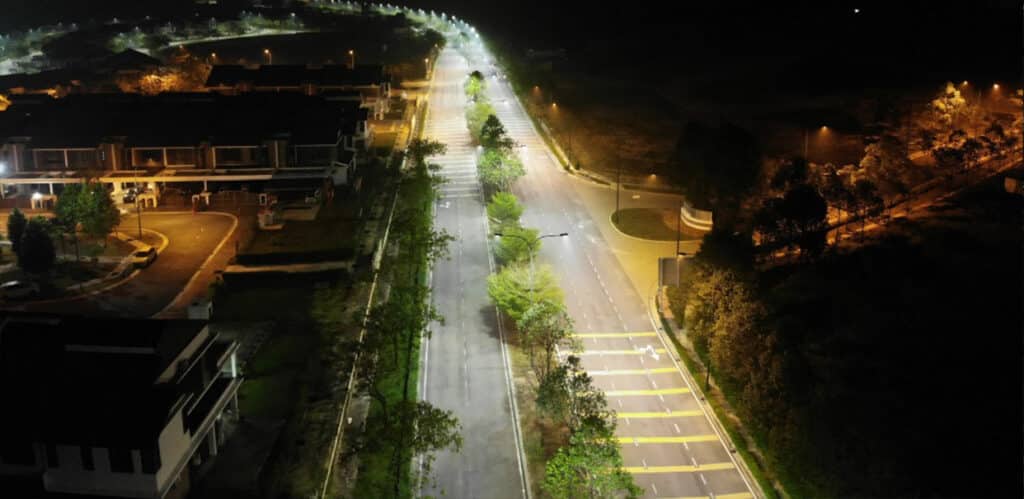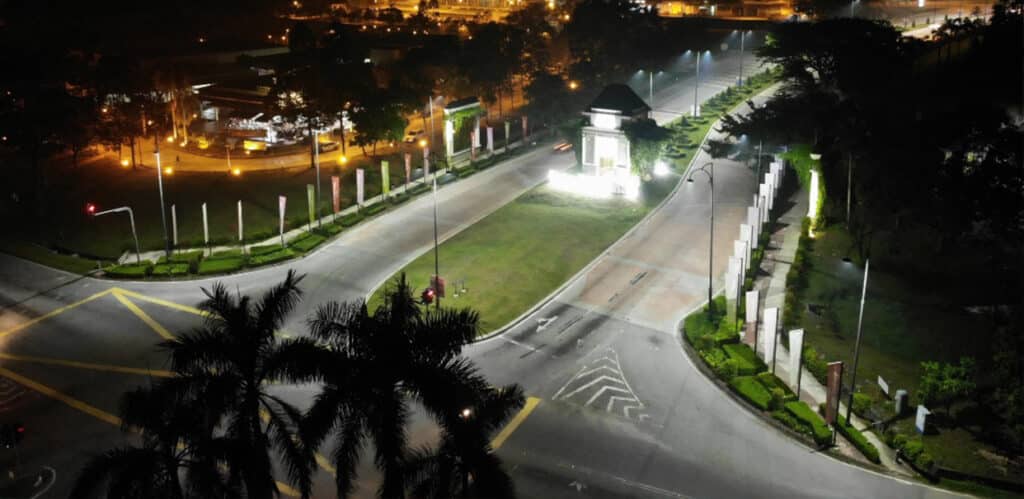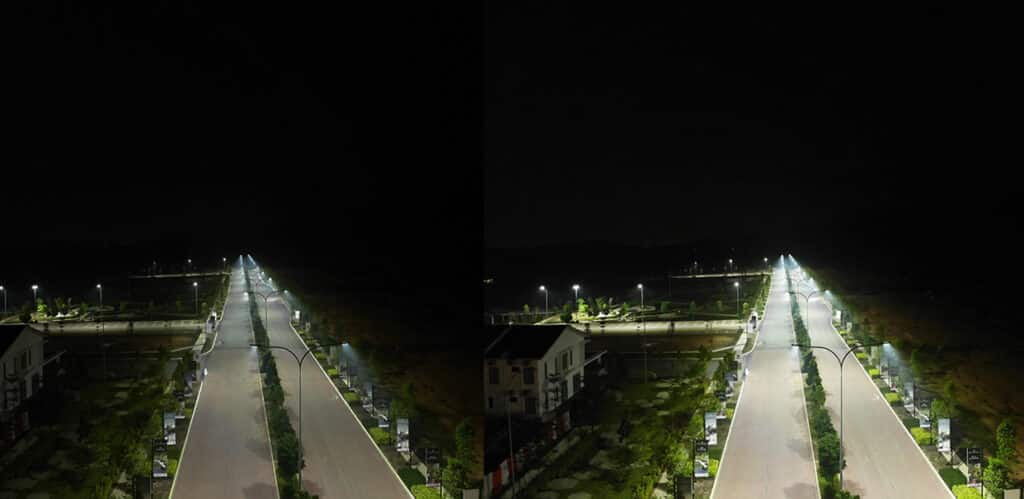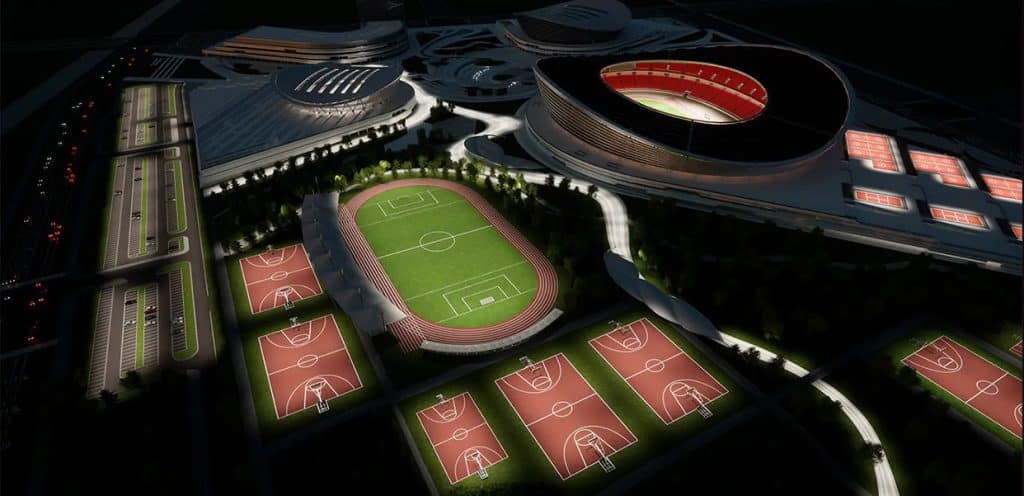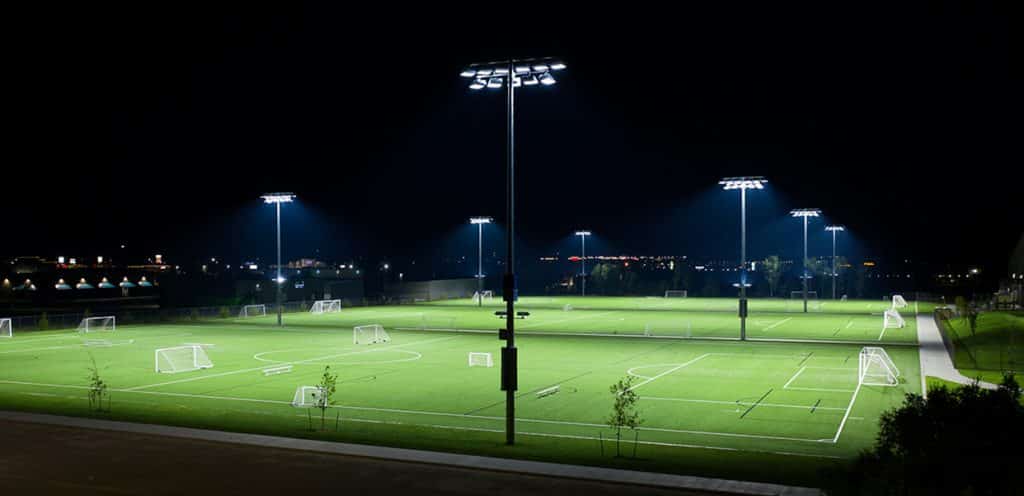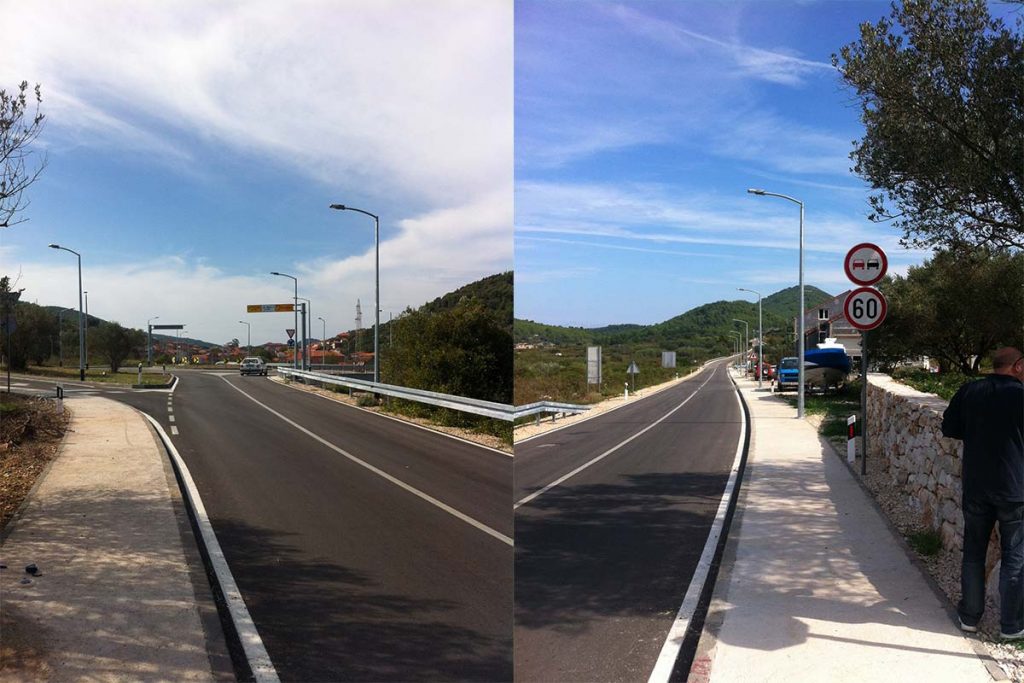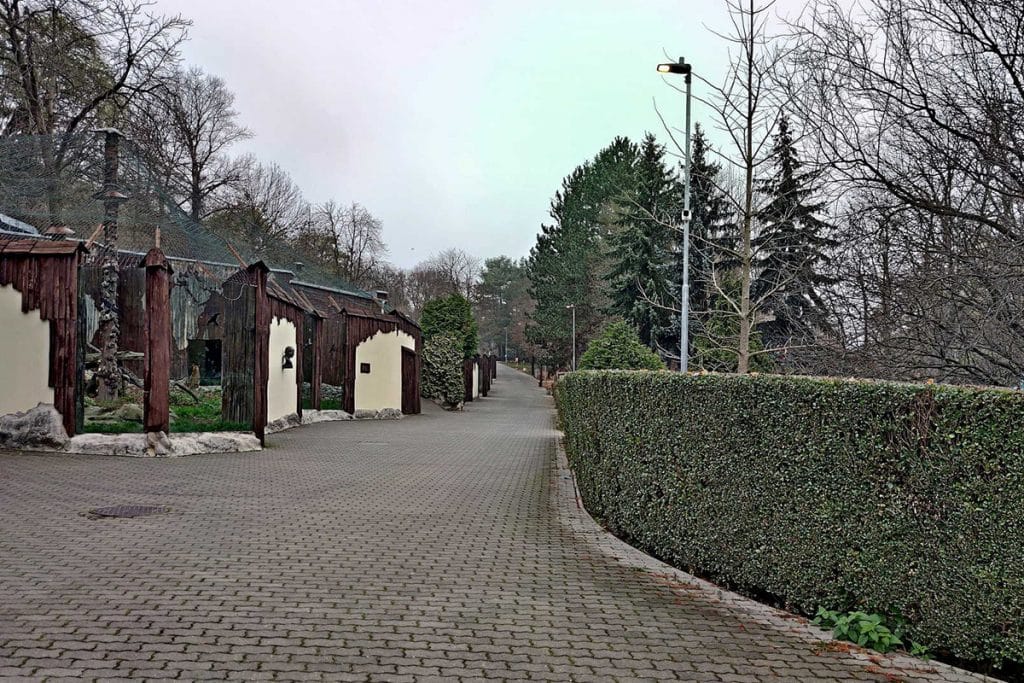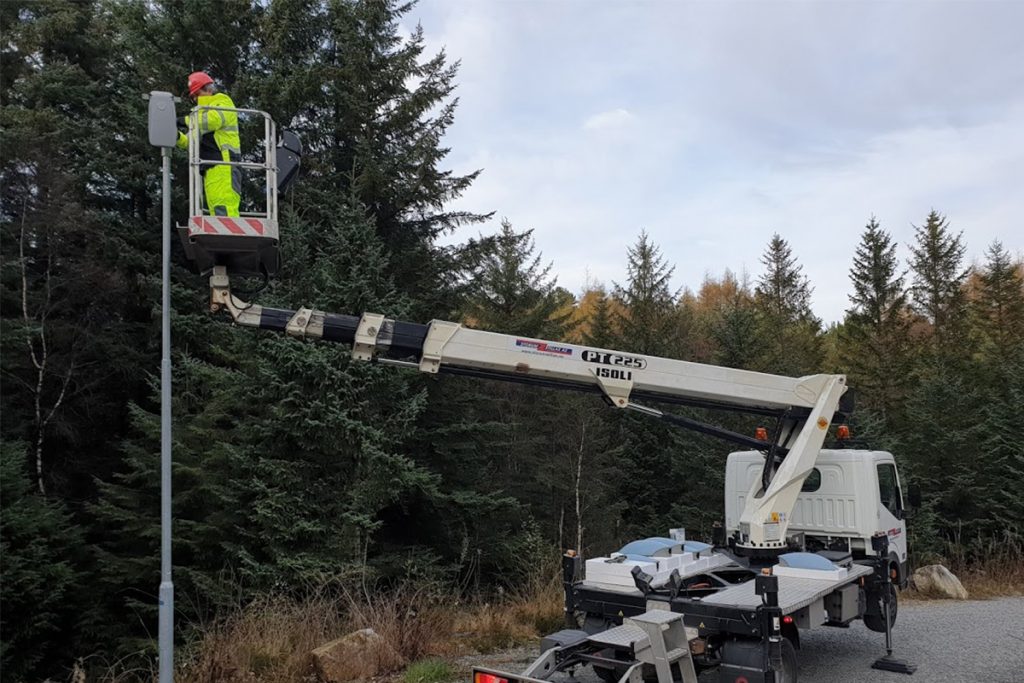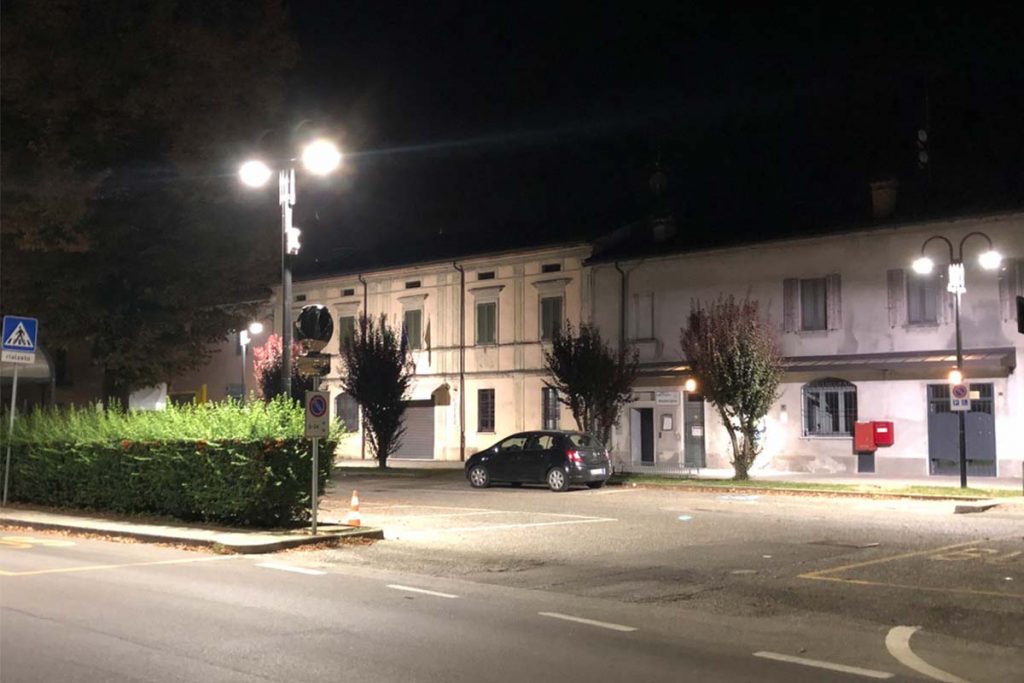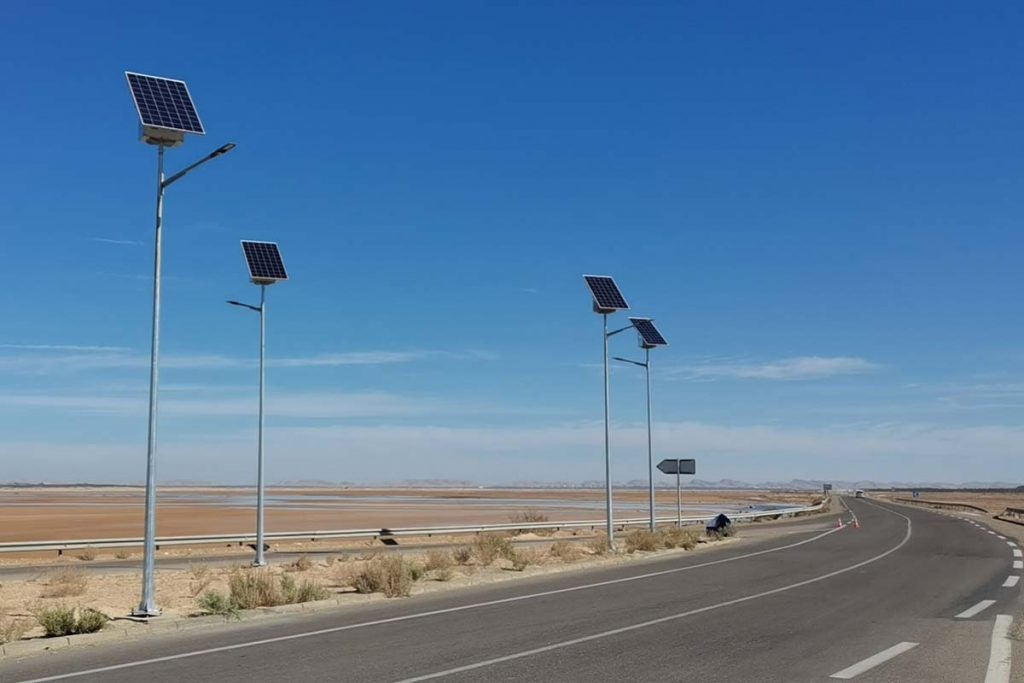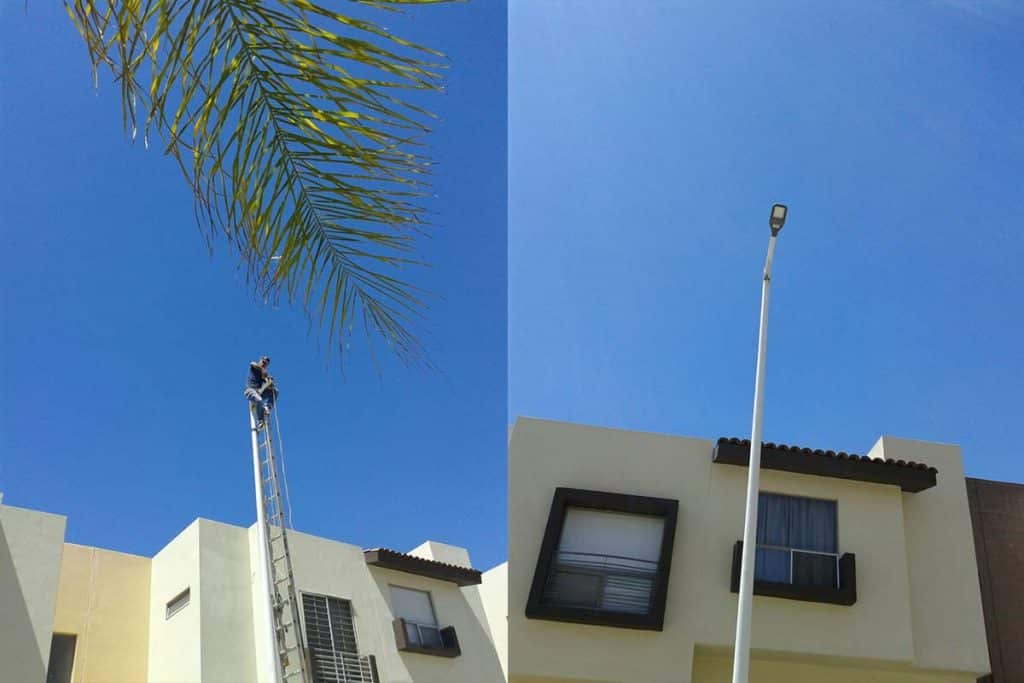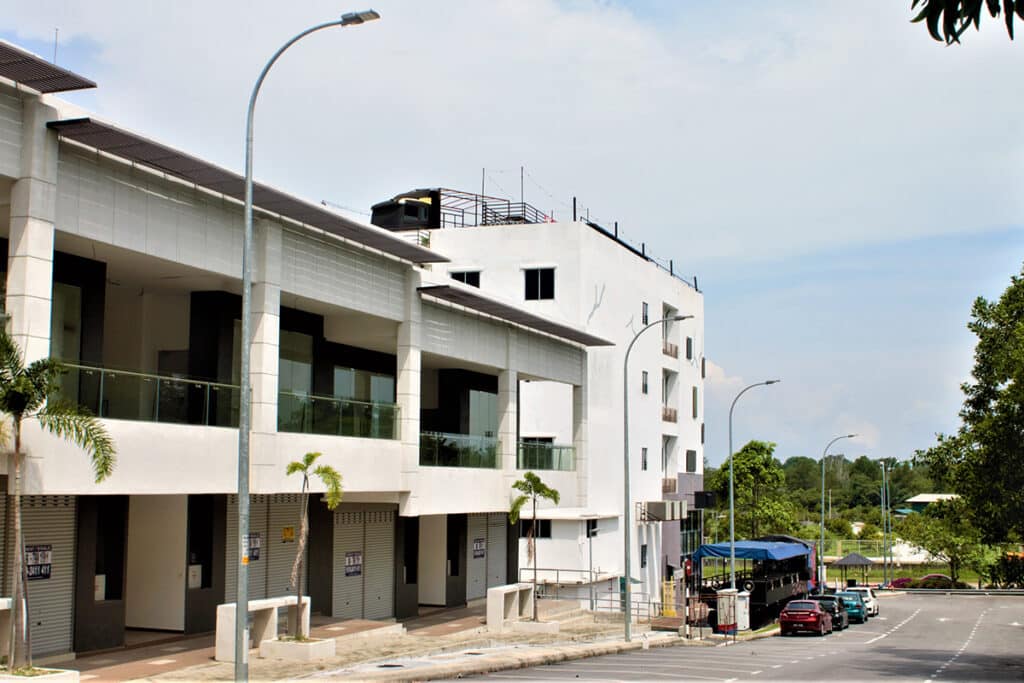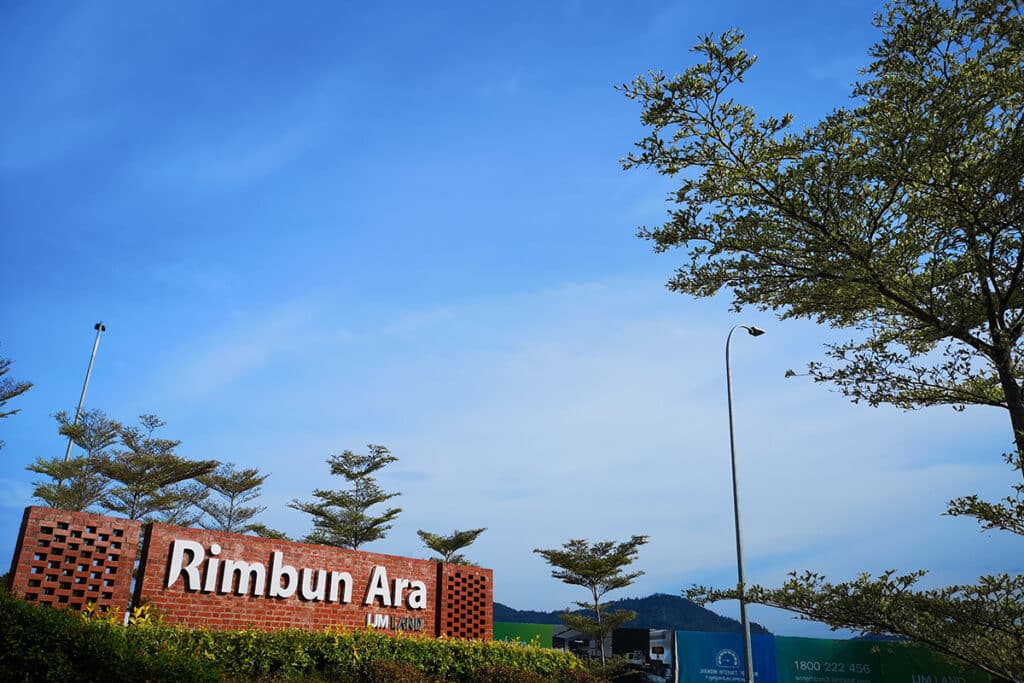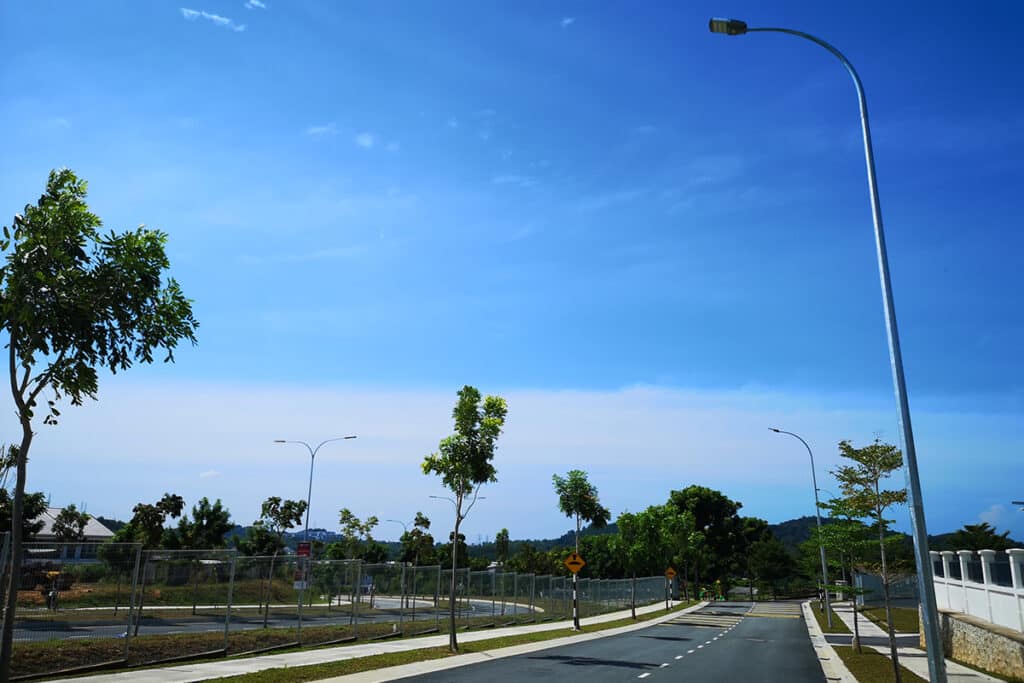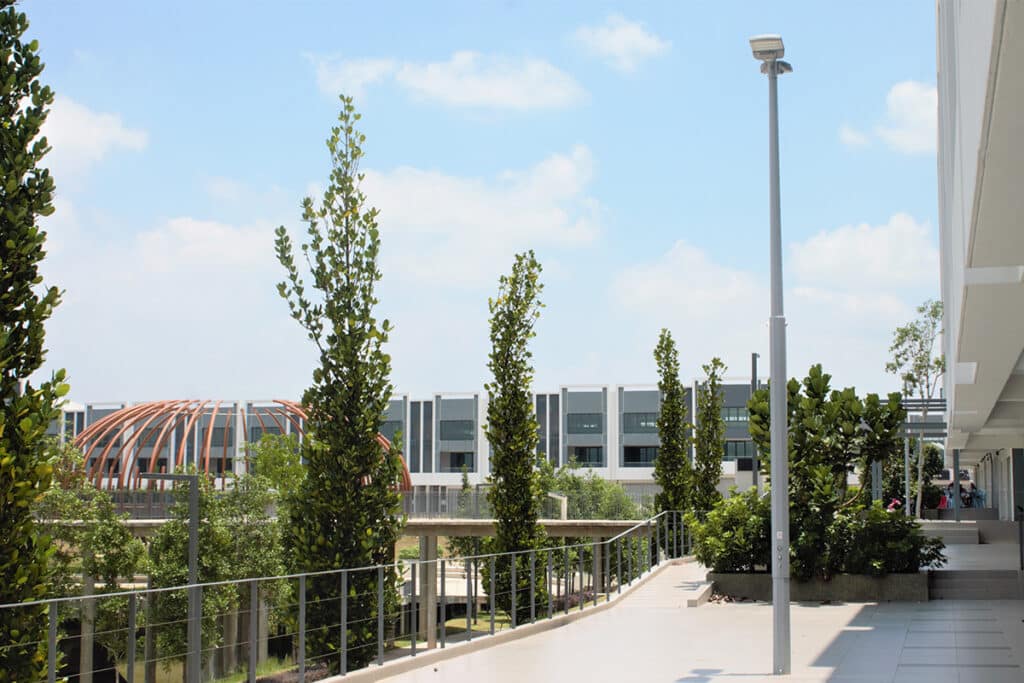Effective projected area and static load test – outdoor luminaires
Effective projected area and static load test – outdoor luminaires
Introduction
High-mounted LED street lights and floodlights are typically used for outdoor illumination. Typically, sturdy poles are required to sustain these outdoor light fixtures. In addition to the impact of the outdoor environment, such as high winds, on the light pole (which is not considered), these factors will also have an effect on the outdoor luminaires themselves. To gain a deeper understanding of this topic, we must determine what the effective projected area of a luminaire is and how it is calculated. Obviously, we must also consider how the effective projected area impacts the lamp’s stability on the pole. In this regard, this is the information we require regarding the administration of the static load test. Let’s discuss the technical topic of EPA and static load test (also known as wind load test) today.
What’s effective projected area(EPA)?
The Effective Projected Area (EPA) of outdoor lamps such as street lamps and floodlights is the cross-sectional area of the lamps when they are installed outdoors and exposed to the wind. It is required knowledge for conducting wind load tests on street lights and their supporting structures, and it is an essential factor to consider when designing lighting solutions. For example, when installed outdoors, street lamps are susceptible to environmental forces such as wind. The wind exerts pressure on the exposed surface of the luminaire, and the magnitude of this force is proportional to the wind speed and the effective projected area of the luminaire. The projected area of ZGSM Rifle is illustrated in the diagram below.
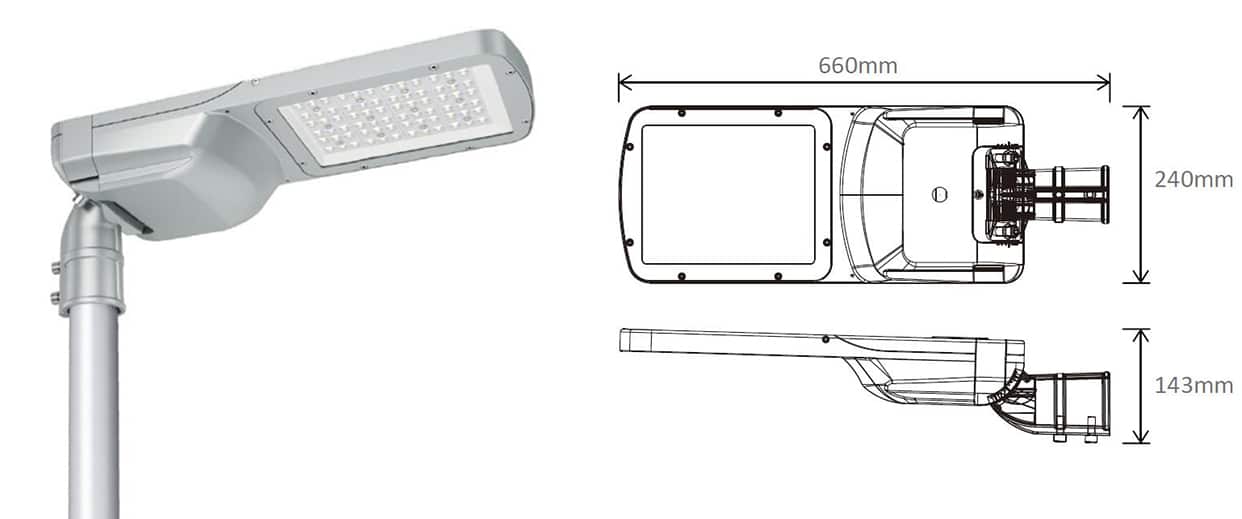
How is EPA calculated?
The Effective Projected Area (EPA) of a luminaire is equal to the area that is “visible” to the wind at a particular angle. All pole mount lighting fixtures and mounting hardwares have EPA values/ratings. To determine the EPA of a luminaire, multiply the projected frontal area by the luminaire’s drag coefficient. That is the formula: EPA = (front projected area) x (drag coefficient)
For cylindrical or rectangular fixtures, this may be relatively simple. For more complex shapes, such as decorative street lights with decorative features, the calculation of FPA may be more complicated. As picture shown above, we can think that FPA=0.66 x 0.24=0.158m2.
In order to calculate the EPA, according to EPA = (Frontal Projected Area) x (Drag Coefficient), we also need to know the size of the Drag coefficient. For example, Flat Plate Body DC = 1.20, Spherical Body DC = 0.47, Angled Body DC = 0.50. EPA=FPA*DC=0.158m2*1.2=0.190m2. The following are the differences in the Drag coefficient values of products of different shapes.

Why we should pay attention to EPA?
Effective projected area (EPA) refers to the entire surface area of lighting fixtures and other objects that a light pole can support at a given wind speed. For streetlights or floodlights, the EPA is a measure of the strength of light poles. As is common knowledge, the wind can affect nearly anything. Therefore, engineers and LED lighting manufacturers utilize EPA to determine the wind force exerted on the structure. This value is combined with the luminaire’s net weight to determine installation requirements, such as the correct pole, mounting height, mounting style, etc. The burden capacity and maximum weight of the light pole are specified by the EPA. At this point, the EPA value of the fixture and the EPA value of the mounting bracket are applied. If the EPA value is high, we may need to install stronger poles for these lanterns, and vice versa. Total EPA and pole weight shall never exceed the maximum rating for the wind zone in which the pole is located. In general, the higher a luminaire is mounted, the greater its wind load rating (requirement). This is due to the fact that taller poles experience greater wind speeds on their upper floors as a result of less wind obstruction from surrounding structures. Overall, calculating the effective projected area of a street light ensures its design and installation safety to sustain wind force, thereby enhancing its durability in outdoor environments. Below is flow simulation of ZGSM flood light with different projection angles.

What’s static load test?
The static load testing of street lights and other outdoor luminaires entails subjecting the luminaire to controlled and sustained loads to ascertain its structural integrity and performance under normal operating conditions. Typically, this test is conducted to ensure that the street light can withstand environmental factors so that it can be securely installed on the road or street, resisting the influence of external forces and natural disasters such as wind, rain, and snow. In general, a constant and evenly distributed load is applied to the FPA surface, and the measurement duration is typically 10 minutes to observe any deflection of the street light, stress changes of key components, and deformation.
How is the static load test is carried out?
For street lights, the test is based on IEC60598-2-3 clause 3.6.3.1; for floodlights, the test is based on IEC60598-2-5 clause 5.6.5. Specific methods can refer to these standards. On the most critical surface, a constant, evenly distributed load is applied for 10 minutes. Then we can collect data such as strain, displacement, and stress distribution, and analyze these data and judge the test results.
Calculate the lamp’s applied load using the given formula. The load shall be equal to F=1/2 Rh x S x Cd x V2. In the formula:
- The drag force (F), on an object is based on the frontal area (A) of the object (i.e., its cross section), the drag coefficient (Cd), of the object, the air density (Rh), and the wind speed (v). The drag force is measured in N.
- Air density (Rh): Air density, like air pressure, decreases with increasing altitude. The air density also changes with variations in atmospheric pressure, temperature, and humidity. For calculations of the drag force, the air density is usually set to 1.225 kg/m3(air volumic mass) based on IEC60598 standards.
- Wind speed (v): The wind speed is factored in twice (i.e., v2) in the calculation, which means that it has a very large impact on the drag force. The unit of the wind speed is m/s.
- The wind speeds relevant to the mounting heights of luminaires or external parts shall be V= 45 m/s (163 km/h) for heights up to 8 m; V= 52 m/s (188 km/h) for heights between 8 m and 15 m; V= 57 m/s (205 km/h) for heights of more than 15 m.
- Frontal area (A): Choosing the frontal area to be the object’s largest cross section means assuming the worst-case scenario regarding wind direction. The unit of the frontal area is m2. Details can be found in previous section.
- Drag coefficient (Cd): The drag coefficient is a dimensionless value that can be used to quantify the drag or resistance of an object (such as a streetlight or a camera) in a fluid environment, such as air. The drag coefficient varies according to shape and direction of the wind and can only be precisely measured with the use of wind tunnels. The lower the drag coefficient (for a given object size), the less wind resistance. Details can be found in previous section.
So when drag coefficient is 1.2, loaded area is 0.158m2, the F(load) =1/2 Rh x S x Cd xV2 =0.5 x 1.225 x 0.158 x 1.2 x 52 x 52 = 314.0 N. And the measured deformation is 0.2 cm/m and no rotation is observed which passed the requirement.

ZGSM outdoor luminaires
Summary
Effective projected area and static load testing are key concepts in outdoor lighting design and luminaire evaluation. The effective projected area refers to the projected area of the luminaire under wind load. Accurate wind load data can be obtained through calculation, which is helpful for designing the luminaire structure and support system and ensuring the stable installation of outdoor luminaires. Static load test is an experimental method to evaluate the structural stability of lamps. It simulates the static load under actual use to ensure that the lamps can withstand normal forces and prevent accidents. The calculation of the load has a certain relationship with the EPA. Both are very important factors in the design and installation of outdoor lighting fixtures. Understanding these will be helpful for the EPA calculation of our luminaires, the application of wind load / static load tests in evaluating the stability of luminaires. They enable us to carry out reasonable design and rigorous testing of lamps, which not only protects the safety of the public, but also prolongs the life of lamps and provides safer and better outdoor lighting for cities.
Rated Products
Related Blogs
Related Cases
People also ask
Author introduction

Hello Customers,
My name is Taylor Gong, I’m the product manager of ZGSM Tech. I have been in the LED lights industry for more than 13 years. Good at lighting design, street light system configuration, and bidding technology support. Feel free to contact us. I’m happy to provide you with the best service and products.
Email: [email protected] | WhatsApp: +8615068758483

